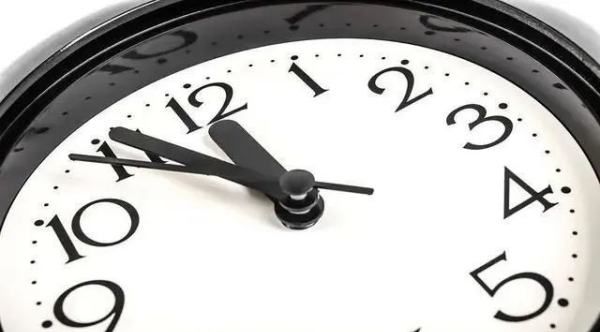本文目录
当总裁助理面对古早狗血火葬场
on
the
bus
笼统来说小型的
比较接近“钻进去”的就是in
大型的用"登上"的就是on
比如
in
the
car
in
the
taxi
on
the
bus
on
the
train
on
the
coach(大巴)
分类说来
1.步行只可用on
foot。(注意:步行不用by
foot)
如:Sometimes
I
go
to
school
on
foot.
2.
骑自行车须用介词
on
:on
a/
one's
bike。
3.
乘车、乘船、乘飞机可用in也可用on:
in/
on
a
bus/train/ship/boat/plane。
4.
乘坐小汽车应使用
in
a
car,不用
on
a
car。
be
on/in
+
交通工具
代表乘坐某种交通工具
注:in一般指乘坐船只、飞机等(坐在...内);
at.in.on都加在什么前?时间?季节
at:固定搭配,at noon在中午,at night 在夜晚,at midnight在午夜。在具体的时间点(几点钟)前面,也用at。用于表示进餐时间。如:at breakfast/lunch/supper(在早餐时/午餐时/晚餐时)用于表示年龄时。如:at 14 (=at the age of 14在14岁)
in:固定搭配,in the morning 在早上,in the afternoon 在下午,in the evening 在晚上,在傍晚。一段较长的时间段前面,用in,包括年份,月份,季节等。比如说,in 2020 (在2020年),in April(在4月),in spring(在春天)。用于某个较长的时间,像世纪、朝代、年、月、季节in March,in spring,in 1997。
on:主要是用在具体的一天前面,包括星期几和几月几号。比如 on Sunday在星期天,on April 12th 在4月12号。用于公共节假日前:on Teachers’ Day。

扩展资料
有些情况,既不用in,也不用on和at。
时间前面可不带介词。next,last,this,that与时间名词连用作状语时。We’re going to work on a farm next Sunday. 下个星期天,我们要去农场劳动。
today, tomorrow, yesterday, the day before yesterday,等之前不加介词。
Are you free tomorrow night? 明晚你有空吗?
on后跟什么词性
1. 表示在较长的时间里(如周/月份/季节/年份/世纪等)。如:in a week; in May; in spring/summer/autumn/winter; in 2008; in the 1990’s等。 2. 表示在上午、下午或晚上。如:in the morning/afternoon/evening。 3. in the daytime(在白天) 属于固定搭配,指从日出到日落这一段时间,反义词组是in the night。 4. “in + 一段时间”表示“多久以后/以内”,常与将来时连用。如:in half an hour; in ten minutes; in a few days等。 【on】我是 “二姐”,我后面所接的时间多与日期有关。具体用法有: 1. 表示在具体的某一天(如日期、生日、节日或星期几)。如:on May 4th, 1919; on Monday; on Teachers’ Day; on my birthday; on that day等。 2. 表示某一天的上午、下午或晚上。如:on the morning of July 2; on Sunday afternoon; on a cold winter evening等。
in on at加时间的用法及区别
一、用法辨析
1、at通常指确切的某个时刻,如at six o'clock。
2、in通常表示一天的某一部分,如in the morning(evening,afternoon)。
3、on则具体说明哪一天的上午或下午,如on Monday morning,on a summer's day。在谈论节日时。
4、at通常指整个的节〔假〕日,不只指一天,如at Easter 在复活节,at Christmas 在圣诞节。
5、on可具体指节日的某一天,如on Easter Monday 在复活节后的星期一,on Christmas Day 在圣诞节(那天)。
6、在谈论月份、季节、年份或世纪时,通常用介词in,如in the eighteenth century 在18世纪,in summer 在夏天,in March 在三月,in 1985 在1985年。
二、指意辨析
at,in,on
这些前置词在表示地点或时间时均含“在……”之意。
1、at表地点时,指空间位置上的某一点;表时间时,指在时间上的某一时刻。
2、in表地点时,指在某一立体空间范围内;表时间时,指一段时间或与年、月、季节时间连用。
3、on表地点时,指某物与另一物表面相接触,或与某地方接壤等;表时间时,指在某一天或某一天的某个时间,尤指在星期几。

扩展资料:
一、at的单词用法
1、用于时间时,可表示时刻,如at night,at three o'clock,at dawn,at any time等。也可表示较短的时期,如at night,at the beginning of the month等。
其中at night表示时刻时意为“在薄暮”,表示较短的时期时意为"在夜里",通常指黄昏或上半夜。
2、at用于信封地址前可指“转交”。
二、on的单词用法
1、日期前的on常被省略。
2、注意in与on的使用:on表示“在物体的表面上”,而in表示“在其中”。指能用in的表达方式有in the morning,in the afternoon,in the evening和in the night。
只能用on的表达方式有on the next morning,on the following afternoon,on the preceding evening,on the night before,on the morning of 6 January等。
英美两国人在用in与on的习惯上不同。表示“在报上,地图上”等时,介词用in,而不用on。表示“手,脚受伤”时,应用介词in,而表示“手脚上的斑点”时,应用介词on。
以上就是关于on表通过的时候后面加什么 ,当总裁助理面对古早狗血火葬场的全部内容,以及on表通过的时候后面加什么 的相关内容,希望能够帮到您。

